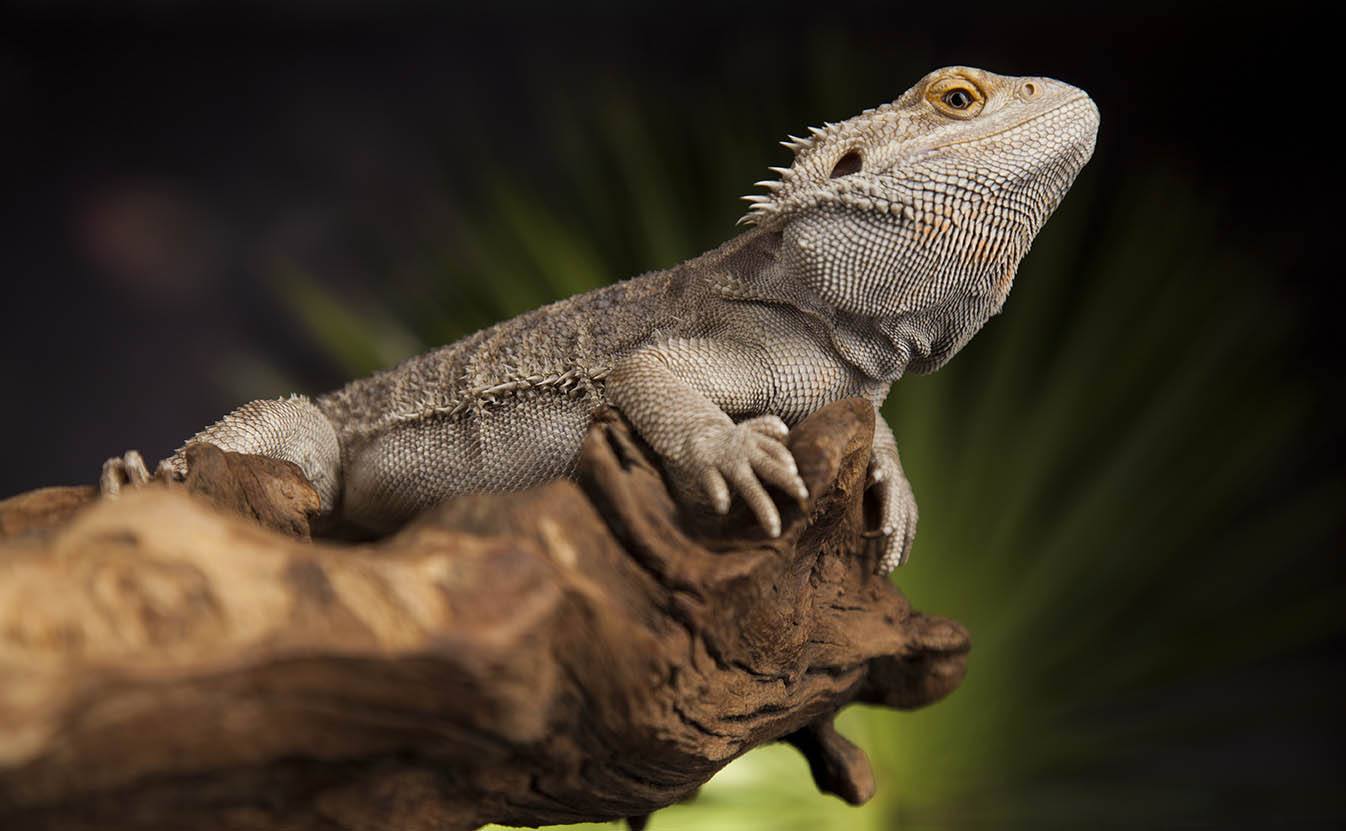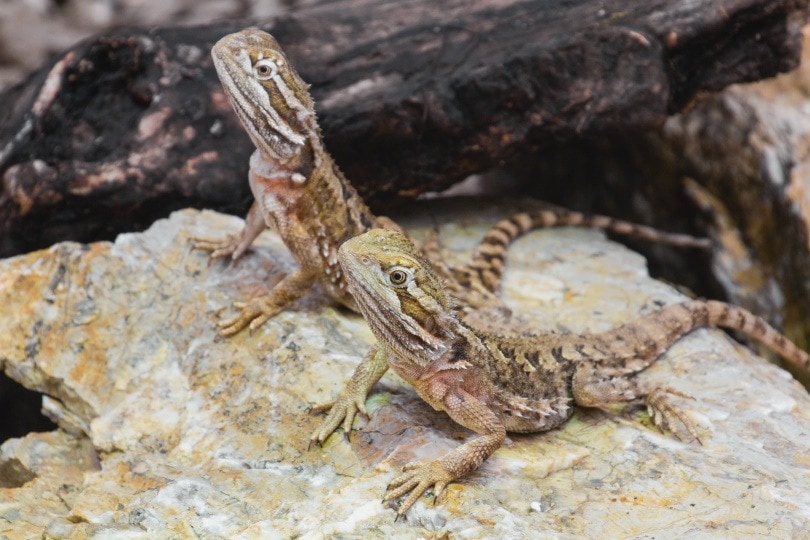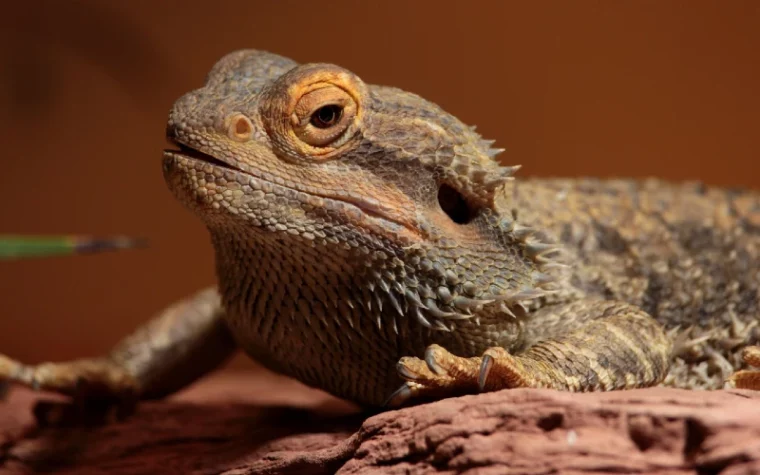
A Bearded Dragon’s skin is tough and thick. In the wild, this skin protects against predators and environmental hazards. One of the symptoms of having such tough skin is that it doesn’t stretch. This means that, as your Bearded Dragon ages and grows, its skin does not. As such, as your Beardie gets older, it will shed its old skin and replace it with new, larger skin that better fits its growing body. Even when your Beardie is fully grown, it will continue to shed each year, replacing worn and damaged layers of skin with fresh skin.
In most cases, assuming appropriate environmental conditions and a healthy Bearded Dragon, the shedding process is painless and relatively simple, although it does cause some discomfort. The skin will shed in patches, the Bearded Dragon will tear sections off with its teeth and, unusually, it may eat the shed skin. Hatchlings will shed every week or two while juveniles will shed every two months and adults will shed once or twice a year.
And, as the Beardie ages, it takes longer for the shed to complete. For hatchlings, the process is usually done in two days. For juveniles, it takes around 10 days, and for adults, it can take as long as 3 weeks.
We look at these and other factors relating to the shedding process below.
Why Bearded Dragons Shed
The skin of a Bearded Dragon is made up of keratin. Keratin is not elastic like human skin and is tough and scalelike. As such, as the Bearded Dragon grows in size, it develops a new layer of keratin under the old and the old top layer of skin needs to be shed to make way for that new layer. Even once your Beardie reaches full maturity, and shouldn’t be growing anymore, the skin becomes damaged and suffers general wear and tear so shedding continues during adulthood so that your Dragon has healthy skin.
It is a perfectly natural and necessary process, but for first-time keepers, it can be alarming.
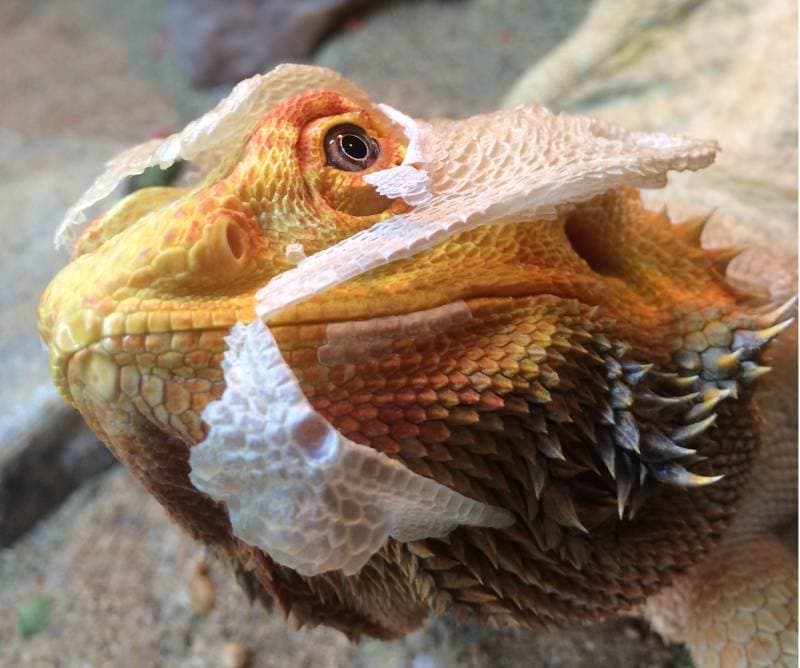
What To Expect When Your Bearded Dragon Sheds
Rather than shedding the whole skin at once, Bearded Dragons will usually shed in patches or sections. They will tear off pieces of the skin with their mouths and may eat the dead skin. Like a lot of other lizard species, the Bearded Dragon eats its shed skin to recuperate the nutrients they lose during the shedding process. Again, this is natural, and you do not need to worry or try to prevent your Beardie from eating the remnants of their shed. With that said, you may still find sections of shed skin in the vivarium and this isn’t a reason to worry, either.
Signs Of Shedding
The most obvious sign of shedding is that the skin starts to flake away, but there are signs you can spot before the skin starts to come away.
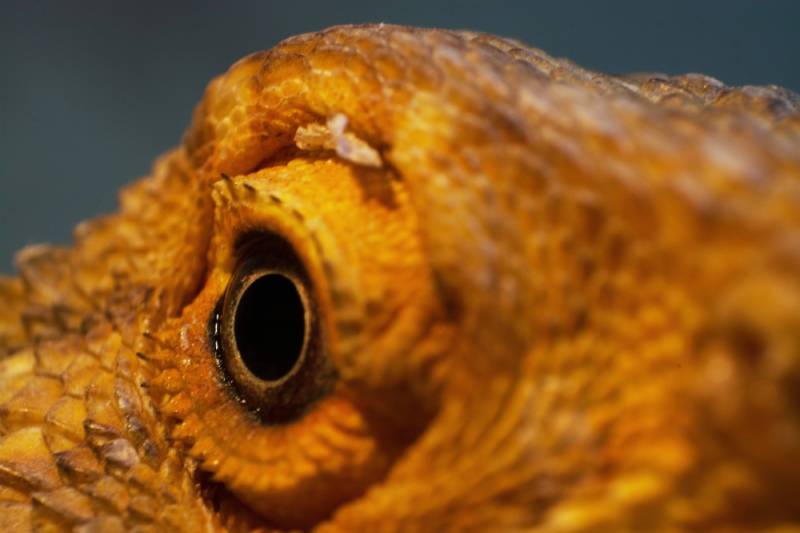
How Often Do Bearded Dragons Shed?
How often and how long it takes a Beardie to shed is dependent on their age, as well as other factors like their health and general nutrition and condition. The table below shows the approximate frequency and shed time for Bearded Dragons, by age.
| Bearded Dragon Age | Shed Frequency | Shed Time |
| 0–6 months | 1–2 weeks | 1–3 days |
| 6–18 months | 6–8 weeks | 1–2 weeks |
| 18+ months | 6–12 months | 2–3 weeks |
How To Care for a Shedding Beardie
As long as the vivarium is set up well and you have appropriate humidity and temperature levels inside, shedding should be a relatively simple process in most instances. However, you can provide rough surfaces for your little lizard to rub against and ensure that they are well hydrated and have a nutritious diet.
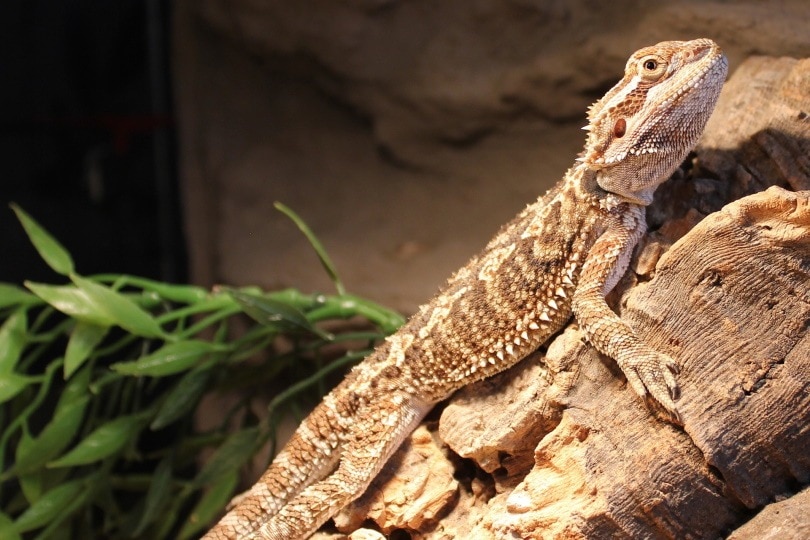
How To Help Move a Stuck Shed
Although most sheds will occur naturally and finish without problems, a stuck shed can be dangerous for a Beardie. The stuck skin can tighten as the body grows and as the skin shrinks through dehydration. This can cause cell death and you need to take action to help with a stuck shed.
Why Is It Taking So Long for My Bearded Dragon To Shed?
Shedding time varies according to age and there isn’t a specific length of time it will take. However, if a young Beardie takes longer than a few days, and an adult Beardie takes longer than a few weeks, to fully shed, it could be a sign of a stuck shed.
Dysecdysis, or a stuck shed, can affect a quarter of Bearded Dragons over their life. It is especially common in older pets but can occur at any age. It is most often caused by poor diet or inappropriate temperature and humidity levels within a vivarium, but it may also be caused by illness or injury.

Do Bearded Dragons Stop Eating When They Shed?
A lot of Bearded Dragons do lose their appetite when shedding. This is one of the reasons that they consume their shed skin: it replaces the nutrients that were lost during the process and that they failed to consume when shedding.
Do Bearded Dragons Need Baths When Shedding?
Although a bath may not be strictly essential for a shedding Bearded Dragon, it can help alleviate the discomfort and may help the skin shed more easily. Baths are especially beneficial for older Bearded Dragons that have tougher skin that takes longer to come away. And, if a shed is taking longer than it should, a bath is a good first step to help the process along.
Conclusion
Bearded Dragons make great pets, and they have a lot of quirks and habits that make them especially interesting. While skin shedding can be alarming for first-time owners, it is a natural process that enables the Bearded Dragon to replace the old skin that is either too small or too damaged and replace it with a new layer of protective keratine. The process can be uncomfortable, although it shouldn’t be too painful, and it can cause some changes in your Beardie’s behavior and patterns.
A Beardie will shed every week or two for the first 6 months of its life, every couple of months between 6 and 18 months of age, and once or twice a year as an adult.
Featured Image Credit: Miriam Fischer, Pexels


